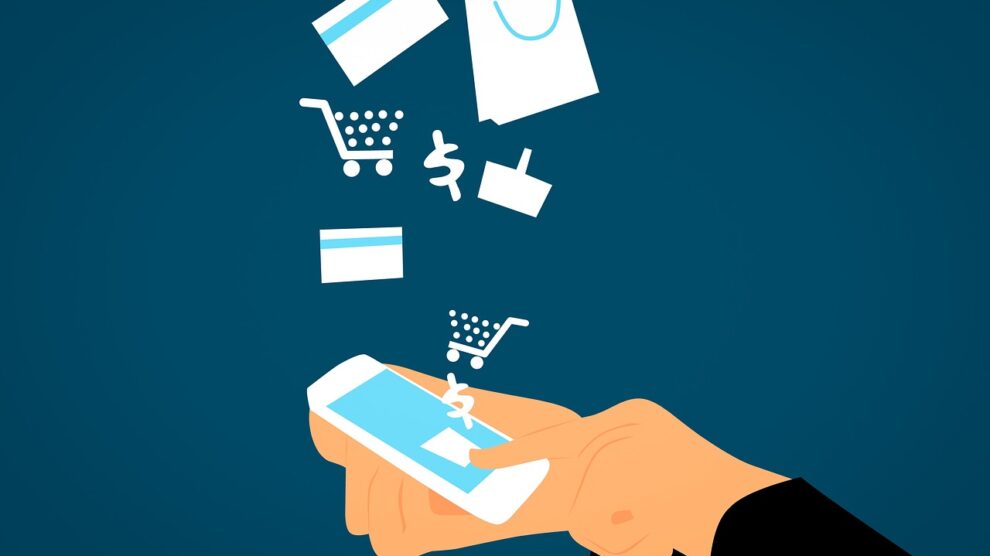You’ve probably done it yourself – browsing Instagram or watching a reel on TikTok, and before you know it, you’ve added something to your cart without even realizing it. That’s not just a random online impulse buy; that’s social commerce in action. It’s the intersection of social media and shopping, giving consumers more options than ever to go from liking a post to purchasing the product.
Social commerce isn’t just a buzzword anymore, it’s transforming how consumers discover, assess, and purchase products—all within the applications they use regularly. For businesses, it’s no longer enough to just “be on social media.” Now, they need to sell on it. And for professionals looking to stay ahead in this fast-moving space, enrolling in the best digital marketing course in India can make all the difference in understanding how to market where people are already spending their time.
This blog breaks down what social commerce really means, why it’s growing so quickly, and how brands and marketers can take advantage of it.
What Is Social Commerce Exactly?
Put simply, social commerce is the intersection of social media and shopping. It allows users to explore, research, and buy products without leaving their desired experiences inside their favorite apps (Instagram, Facebook, TikTok) and so on.
Key functionalities include:
- In-app storefronts and shoppable posts give users the options to tap, see details, add to cart or complete purchases without a redirect.
- Live shopping features, already popular in Asia since ~2017, provide businesses with interactive demonstrations, real-time chats, and exclusive discounts—and instant impulse buys.
- They also introduce an element of social proof to every post, drawing on likes, comments, UGC, and reviews.
- Chat selling takes place in users’ DMs on Instagram, WhatsApp, or Messenger, and leads to a more personalized interaction.
Market Size & Growth Trends
Social commerce is no longer niche – it’s rapidly reshaping global retail.
Quick Overview
In 2024, worldwide social commerce sales reached around US $700 billion, with strong growth projected through the decade. In fact, most analysts agree this market will hit or exceed the trillion-dollar mark by 2028.
The Asia-Pacific region is a dominant player, accounting for around 70–90% of total social commerce spending due to immersive livestream and mobile-first shopping behaviours.
How Other Regions Compare
The U.S. is catching up: projections suggest US social commerce spending nearly doubles from US $64 billion in 2023 to over US $140 billion by 2027–28.
European growth is slower, but projections show this segment will double from approximately US $18 billion in 2022 to US $50 billion by 2028.
Why This Matters
Together these trends create significant both risk and opportunity- social commerce is experiencing not only growth but also rapid growth as a channel to consumers, especially the youngest generations. Companies that ignore this shift will be missing out on the fastest growing sales channel of this decade.
Source: https://comet.rocks/social-commerce-2025
Big Platforms and Their Advantages
Here’s an overview of the best social platforms and what sets each of them apart:
Instagram and Facebook
- Visual-first, seamless shopping: Instagram users can tap product tags in posts, Stories or Reels and check out directly in the app.
- Integrated Shops: When brands create their own Shop pages, they essentially turn their profiles into integrated stores, allowing businesses to show a curated collection of merchandise in one tab.
- Engagement level: Instagram has the best engagement rate (~1%) compared to Facebook and Twitters, and allows brands to build real fans and not just followers.
TikTok
- Discovery-first format: The platform leans toward viral, short-form video and creator-led demos, with product tags woven into the content.
- Live Shopping & impulsive buying: TikTok Shop brings everyday alive by shopping and purchasing in real-time through live-streams, generating frequently FOMO-driven conversions for beauty and fashion shoppers in particular. Creators in the UK using TikTok’s “discovery commerce” model have seen staggering success, including one beauty product that sells every second on TikTok Shop UK.
- Built for creators: Affiliate and commission-based tools mean creators can monetize content directly—without needing outside platforms.
- Intent-driven discovery: Users researching lifestyle, décor, or fashion often rely on Pinterest for inspiration—and its “Shoppable Pins” let them go from inspiration to cart in a few taps.
- High-intent audience: Pinterest users exhibit purchasing intent at inception—creating the right atmosphere for intentional retail brands.
Asia-First Platforms (Xiaohongshu, Meesho, etc.)
- Community + commerce: Platforms such as Xiaohongshu combine authentic reviews, influencer posts, and integrated shops—creating a cycle of trust and transactions.
- Resale-centric ecosystems: Platforms such as Meesho facilitate peer-to-peer selling, mainly in India—leveling up social commerce.
Advantages for Brands & Buyers
Here’s why social commerce benefits sellers and buyers alike – easily understood, human-centered data with real evidence:
For Brands
1. Broaden your reach
Social platforms are connect millions of active users. Brands are able to reach new niches of their totally new segments of the market and get to customers that haven’t even visited their website.
2. Shorten the funnel
There are fewer click pathways, to find something and for it to go to the checkout, which means brands can more quickly move new customers on the cart stock and reduce abandonment of purchases.
3. Built-in trust and engagement features
With the built-in comments, live streaming, and DMs, buyers and brands can talk to each other in real-time, creating customer loyalty with brand direct responses.
4. Opportunity to collaborate with influencers
When creators share or recommend products or brands, they imply a measure of community trust. Research indicates that affiliate links shared by influencers generated around 20% of U.S. e-commerce sales on Cyber Monday 2023.
5. Affordable and effective marketing
Brands are trying to find cost-effective ways to capture new customers while managing the costs incorporate, so being able to use organic social reach, UGC, and influencer-generated sponsorships are very cost-effective compared and you still have a measurable marketing tool you can target toward choice consumers through a campaign.
For Consumers
1. Convenience all the way
Browse and buy in the same place—with no app-switching required.
2. Personalized shopping
Social platforms suggest products based on interests and past activity, making recommendations more relevant.
3. Better shopping experiences
Interactive elements—AR try-ons, quizzes, live demos—make shopping feel more engaging and fun.
4. Real peer reviews and content
UGC like unboxing videos and comments give shoppers confidence before buying.
5. Exclusive access and deals
Many brands offer followers-only discounts or flash sales directly on social platforms.
6. Speedy support
Need help? A quick DM or live chat often gets immediate, personal attention—much faster than typical helpdesk routes.
Challenges & Risks
Social commerce feels seamless, but it brings real-world complications:
- Platform dependence: Brands live by the rules of social networks. Algorithm shifts or policy changes can instantly change their reach or revenue.
- Privacy & data risk: With 54–83% of users worrying about how their info is used, mishandling customer data or working with unverified tools can destroy trust.
- Operational issues: Delayed shipping, unclear delivery updates, or fragmented logistics frustrate customers and can quickly erode credibility.
Conclusion
Social commerce has moved shopping from the mall to the news-feed, merging discovery, conversation, and checkout into one seamless scroll. The successful brands will be those who think of every post as a storefront, answer questions live in the comments, and deliver on their promises. For shoppers, the payoff is convenience backed by community proof—likes, comments, and live demos that make a product feel real before it ever lands at the door.
If you want to turn these insights into practical skills, a hands-on digital marketing course in Bengaluru can give you the playbook to sell where today’s customers actually spend their time. Master the craft now, and your next social post could double as your most profitable sales counter.





